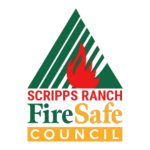Essential Fire Safety Tips Every Home Should Follow
Understanding Fire Safety: Why It’s Crucial for Your Home
In the role of a firefighter, I’ve witnessed firsthand the devastating effects of fires on families and their homes. Fire safety is not just a set of guidelines; it’s a crucial practice that every homeowner should prioritize to protect their loved ones and possessions. This article aims to empower you with knowledge and practical tips on fire safety, ensuring that you are well-equipped to prevent fires and respond effectively in case of an emergency.
The Fundamentals of Fire Prevention
Preventing a fire from starting is the cornerstone of fire safety. Many fires in the home are preventable, and here are some essential steps you can take:
- Regularly inspect electrical appliances and wiring: Faulty electrical equipment is a leading cause of home fires. Inspect cords for fraying, avoid overloading outlets, and replace any old or damaged appliances.
- Stay vigilant in the kitchen: Never leave cooking unattended, keep flammable materials away from the stove, and always have a fire extinguisher within reach.
- Practice safe smoking habits: If smoking indoors cannot be avoided, ensure that cigarettes are fully extinguished and use deep ashtrays. Never smoke in bed.
- Keep flammable materials and liquids stored safely: Store all flammable liquids away from heat sources and in properly labeled containers.
Equip Your Home with Fire Safety Tools
Equipping your home with the right tools is a critical component of fire safety:
- Smoke alarms: Install smoke alarms on every level of your home, inside bedrooms, and outside sleeping areas. Test them monthly and replace batteries at least once a year.
- Fire extinguishers: Have at least one fire extinguisher in your home, and ensure that all household members know how to use it. It’s recommended to have extinguishers on each floor, especially in the kitchen and garage.
- Fire escape plans: Create and practice a fire escape plan with all members of your household. Ensure that everyone knows two ways out of each room and establish a meeting point outside your home.
Responding to a Fire
If a fire occurs, knowing how to respond can save lives:
- Evacuate immediately: If the alarm sounds, leave your home immediately. Do not stop to gather possessions.
- Stay low: Smoke rises, so stay low to the ground where the air is cleaner and cooler.
- Check doors before opening: Use the back of your hand to check doors for heat before opening them. If the door is hot, find another way out.
- Stop, Drop, and Roll: If your clothes catch fire, stop, drop to the ground, cover your face, and roll until the flames are extinguished.
Frequently Asked Questions (FAQs) about Fire Safety
Q: How often should I test my smoke alarm?
A: Test your smoke alarms at least once a month and replace the batteries at least once a year or as needed.
Q: Can I use water to put out a grease fire in the kitchen?
A: Never use water to put out a grease fire. Use a fire extinguisher or cover the pan with a lid to smother the flames.
Q: What should I do if I can’t evacuate during a fire?
A: If you can’t evacuate, close all doors between you and the fire, seal all cracks where smoke can enter with wet towels, and call 911 to report your location.
Q: How many fire extinguishers should I have in my home?
A: It’s advisable to have at least one fire extinguisher on each floor of your home, especially in high-risk areas like the kitchen and garage.
Conclusion
Fire safety is a fundamental aspect of securing your home and protecting your loved ones. By understanding the risks, implementing preventive measures, equipping your home with the necessary tools, and knowing how to respond in case of a fire, you can significantly reduce the likelihood of fire-related incidents. Remember, preparation and knowledge are your best defenses against the threat of fires. Take action today to ensure your home is safe and secure from fire hazards. Together, we can create safer homes and communities for everyone.
